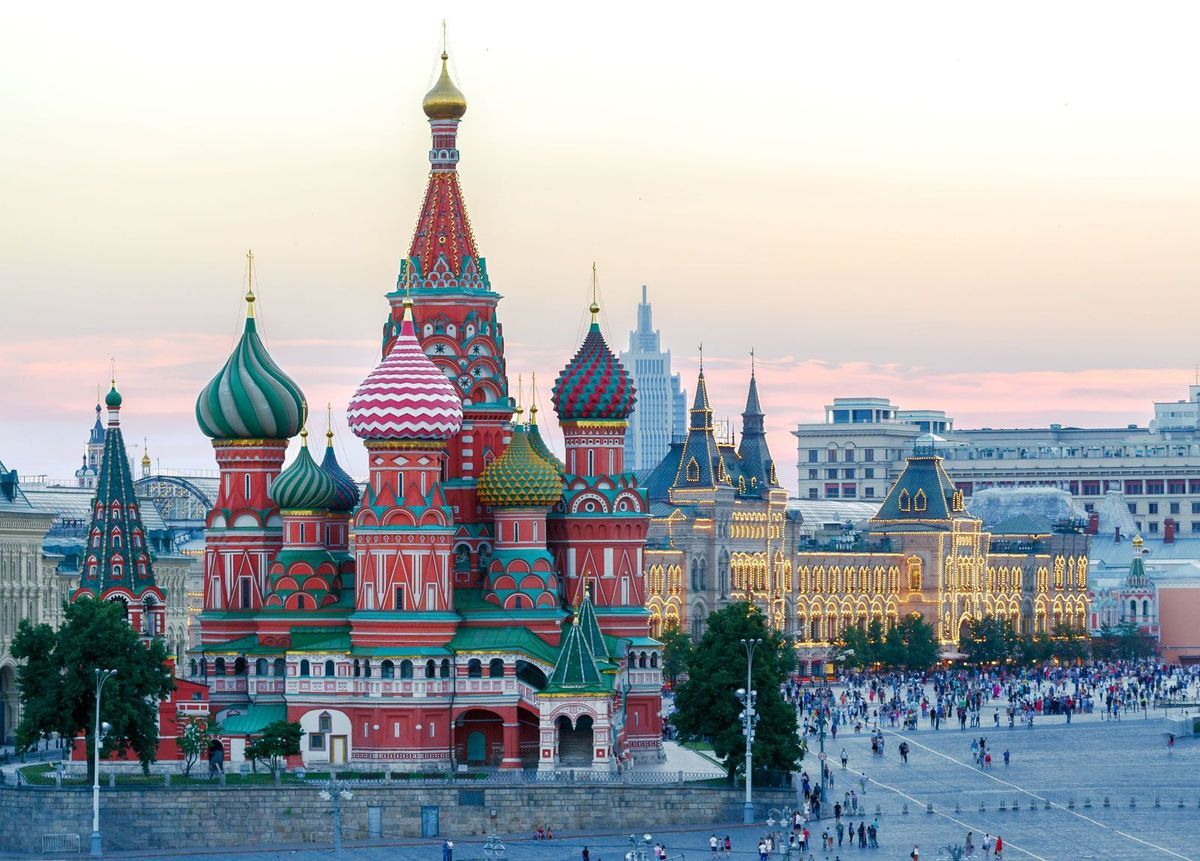
Moscow, Russia's vibrant capital, boasts a rich tapestry of history and culture. Ever wondered about the stories behind its iconic landmarks? Moscow landmarks are not just architectural marvels; they are windows into the past. From the grandeur of the Kremlin to the colorful domes of St. Basil's Cathedral, each site has a unique tale. Did you know the Kremlin's walls stretch over 2 kilometers? Or that St. Basil's was commissioned by Ivan the Terrible? Whether you're a history buff or just curious, these 24 facts about Moscow landmarks will leave you amazed. Ready to dive into Moscow's fascinating heritage? Let's get started!
Key Takeaways:
- Moscow is filled with iconic landmarks like Red Square, the Kremlin, Bolshoi Theatre, and the Moscow Metro, each with its own unique history and significance.
- The Tretyakov Gallery houses a vast collection of Russian art, spanning classical to contemporary works, making it a must-visit for art enthusiasts and history lovers.
Red Square
Red Square is the heart of Moscow, brimming with history and culture. This iconic location has witnessed countless significant events.
- Red Square got its name from the Russian word "krasnaya," which means both "red" and "beautiful."
- The square is home to Lenin's Mausoleum, where the embalmed body of Vladimir Lenin has been on display since 1924.
- St. Basil's Cathedral, with its colorful onion domes, was commissioned by Ivan the Terrible in the 16th century.
- The Kremlin Wall Necropolis serves as the final resting place for many Soviet leaders and notable figures.
- GUM, the State Department Store, is a stunning example of Russian architecture and a shopper's paradise.
The Kremlin
The Kremlin is a fortified complex in the center of Moscow, serving as the official residence of the President of Russia.
- The Kremlin includes five palaces, four cathedrals, and the enclosing Kremlin Wall with its towers.
- Ivan the Great Bell Tower was the tallest structure in Moscow until the Russian Revolution.
- The Tsar Bell is the largest bell ever cast, weighing over 200 tons, but it has never been rung.
- Tsar Cannon, a massive artillery piece, was cast in 1586 and is one of the largest cannons ever made.
- The Grand Kremlin Palace was once the residence of the Tsar and now hosts official state ceremonies.
Bolshoi Theatre
The Bolshoi Theatre is a historic theatre in Moscow, renowned for its ballet and opera performances.
- The Bolshoi Theatre opened in 1825 and has been a symbol of Russian culture ever since.
- The theatre's name, "Bolshoi," means "big" or "grand" in Russian.
- The Bolshoi Ballet is one of the oldest and most prestigious ballet companies in the world.
- The theatre underwent a massive renovation from 2005 to 2011, costing over $1 billion.
- The Bolshoi Theatre's main stage curtain weighs approximately 1.5 tons.
Moscow Metro
The Moscow Metro is not just a transportation system but also an underground art gallery.
- The Moscow Metro opened in 1935 and is one of the busiest metro systems in the world.
- Many stations are adorned with chandeliers, mosaics, and statues, making them architectural masterpieces.
- Komsomolskaya Station is known for its grandiose design, featuring marble columns and intricate mosaics.
- Mayakovskaya Station won a Grand Prize at the 1939 New York World's Fair for its design.
- The Metro has 12 lines and over 200 stations, covering more than 400 kilometers.
Tretyakov Gallery
The Tretyakov Gallery is a world-famous museum housing an extensive collection of Russian art.
- The Tretyakov Gallery was founded by Pavel Tretyakov in 1856.
- It contains over 130,000 works of art, including paintings, sculptures, and icons.
- The gallery is divided into two buildings: the State Tretyakov Gallery and the New Tretyakov Gallery.
- The State Tretyakov Gallery focuses on classical Russian art, while the New Tretyakov Gallery showcases modern and contemporary works.
Moscow's Marvels in a Nutshell
Moscow's landmarks tell stories of history, culture, and architectural brilliance. From the Kremlin's fortified walls to St. Basil's Cathedral's colorful domes, each site offers a unique glimpse into Russia's past. The Bolshoi Theatre stands as a testament to the city's rich performing arts scene, while Gorky Park provides a green escape in the urban landscape. Red Square remains the heart of Moscow, bustling with life and history. The Moscow Metro isn't just a transit system; it's an underground art gallery. Lenin's Mausoleum and the State Historical Museum offer deep dives into Soviet and Russian history. Whether you're exploring the grandeur of Cathedral of Christ the Saviour or the modernity of Moscow City, the city's landmarks are a blend of old and new, making Moscow a fascinating destination for any traveler.
Frequently Asked Questions
Was this page helpful?
Our commitment to delivering trustworthy and engaging content is at the heart of what we do. Each fact on our site is contributed by real users like you, bringing a wealth of diverse insights and information. To ensure the highest standards of accuracy and reliability, our dedicated editors meticulously review each submission. This process guarantees that the facts we share are not only fascinating but also credible. Trust in our commitment to quality and authenticity as you explore and learn with us.
